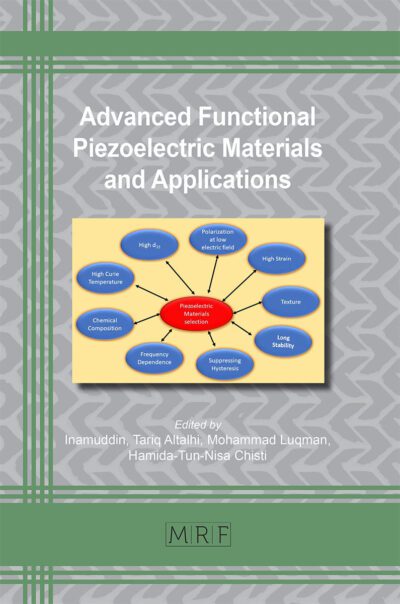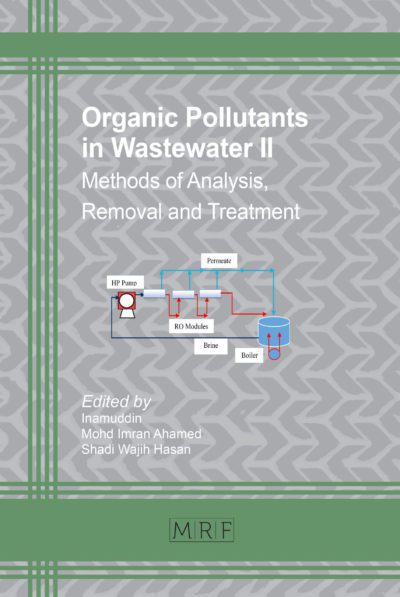Single point incremental forming of multi-matrix continuously-reinforced composites: A feasibility study
Jan-Erik RATH, Doran NETTIG, Dominic R. PALUBISKI, Thorsten SCHÜPPSTUHL, Dmitry S. IVANOV
Abstract. Fibre-reinforced plastics offer remarkable strength-to-weight ratios, making them an excellent choice for lightweight engineering solutions. However, the forming of precursor materials such as preforms or prepregs poses substantial challenges, with defects such as delaminations or fibre misalignments occurring frequently. One approach to de-risk composite parts manufacturing are Multi-Matrix Continuously-Reinforced Composites (MMCRCs), pre-structured with formable and non-formable matrix materials connected by continuous fibre reinforcement. Regions with a matrix of covalent adaptable networks (CANs, aka vitrimers) can be locally formed to the desired shape, while unformable regions with a conventional thermoset matrix restrict undesirable deformations. As targeted local forming operations are required, incremental sheet forming is proposed as a flexible forming process that does not involve expensive moulds. To evaluate the feasibility of incrementally forming MMCRCs, a simple corner geometry is formed using single point incremental forming (SPIF) in this study. The prepared sample with a formable hinge region is attached to a metal dummy sheet with a vacuum bag and heated to forming temperature. Using a specifically developed toolpath strategy, the layup is deformed in a robotic SPIF setup. Albeit revealing challenges in the simultaneous forming of metal and MMCRC sheets, results prove that the proposed approach is promising in allowing the manufacture of high-quality composite parts in decoupled production and forming processes.
Keywords
Composite, Fibre Reinforced Plastic, Incremental Sheet Forming, Multi-Matrix Systems
Published online 5/7/2025, 9 pages
Copyright © 2025 by the author(s)
Published under license by Materials Research Forum LLC., Millersville PA, USA
Citation: Jan-Erik RATH, Doran NETTIG, Dominic R. PALUBISKI, Thorsten SCHÜPPSTUHL, Dmitry S. IVANOV, Single point incremental forming of multi-matrix continuously-reinforced composites: A feasibility study, Materials Research Proceedings, Vol. 54, pp 517-525, 2025
DOI: https://doi.org/10.21741/9781644903599-56
The article was published as article 56 of the book Material Forming
![]() Content from this work may be used under the terms of the Creative Commons Attribution 3.0 license. Any further distribution of this work must maintain attribution to the author(s) and the title of the work, journal citation and DOI.
Content from this work may be used under the terms of the Creative Commons Attribution 3.0 license. Any further distribution of this work must maintain attribution to the author(s) and the title of the work, journal citation and DOI.
References
[1] M.H. Hassan, A.R. Othman, S. Kamaruddin, A review on the manufacturing defects of complex-shaped laminate in aircraft composite structures, Int. J. Adv. Manuf. Technol. 91 (2017) 4081–4094. https://doi.org/10.1007/s00170-017-0096-5
[2] D.R. Palubiski, M.L. Longana, Dulieu-Barton, Janice M., Hamerton, Ian, D.S. Ivanov, Composite forming post-manufacture: reducing complexity and de-risking manufacture, in: Material Forming: ESAFORM 2024, Materials Research Forum LLC, 2024, pp. 440–448. https://doi.org/10.21741/9781644903131-49
[3] D. Stanier, I. Gent, S.S. Roy, I. Hamerton, P. Potluri, D.S. Ivanov, Mechanical Behaviour of Patterned Multi-Matrix Composites with Gradient Properties, in: Proceedings of the 17th European Conference on Composite Materials ECCM17, 2016.
[4] D.R. Palubiski, M.L. Longana, J.M. Dulieu-Barton, I. Hamerton, D.S. Ivanov, Multi-matrix continuously-reinforced composites: A novel route to sustainable repair of composite structures, Mater. Des. 235 (2023) 112446. https://doi.org/10.1016/j.matdes.2023.112446
[5] D. Montarnal, M. Capelot, F. Tournilhac, L. Leibler, Silica-like malleable materials from permanent organic networks, Science (New York, N.Y.) 334 (2011) 965–968. https://doi.org/10.1126/science.1212648
[6] L. Ben Said, The incremental sheet forming; technology, modeling and formability: A brief review, Proc. Inst. Mech. Eng. E: J. Process Mech. Eng. 236 (2022) 2729–2755. https://doi.org/10.1177/09544089221093306
[7] C. Hou, X. Su, X. Peng, X. Wu, D. Yang, Thermal-Assisted Single Point Incremental Forming of Jute Fabric Reinforced Poly(lactic acid) Biocomposites, Fibers Polym. 21 (2020) 2373–2379. https://doi.org/10.1007/s12221-020-1016-0
[8] M. Fiorotto, M. Sorgente, G. Lucchetta, Preliminary studies on single point incremental forming for composite materials, Int. J. Mater. Form. 3 (2010) 951–954. https://doi.org/10.1007/s12289-010-0926-6
[9] A. Al-Obaidi, A. Kunke, V. Kräusel, Hot single-point incremental forming of glass-fiber-reinforced polymer (PA6GF47) supported by hot air, J. Manuf. Process. 43 (2019) 17–25. https://doi.org/10.1016/j.jmapro.2019.04.036
[10] R. Emami, M.J. Mirnia, M. Elyasi, A. Zolfaghari, An experimental investigation into single point incremental forming of glass fiber-reinforced polyamide sheet with different fiber orientations and volume fractions at elevated temperatures, J. Thermoplast. Compos. Mater. 36 (2022) 1893-1917. https://doi.org/10.1177/08927057221074266
[11] A. Al-Obaidi, A. Graf, V. Kräusel, M. Trautmann, Heat supported single point incremental forming of hybrid laminates for orthopedic applications, Procedia Manuf. 29 (2019) 21–27. https://doi.org/10.1016/j.promfg.2019.02.101
[12] J.-E. Rath, T. Schüppstuhl, Tool path strategies for single point incremental forming of fiber-reinforced thermoplastic sheets, in: Material Forming: ESAFORM 2024, Materials Research Forum LLC, 2024, pp. 641–650. https://doi.org/10.21741/9781644903131-71
[13] S.M. Mirnia Kalaei, M. Razbin, M. Emami, M.R. Gholami, M. Salehian, F.R. Biglari, Analysis of single-point warm incremental forming for glass fiber-reinforced polyamide 6 sheets: Experimentation and simulation, J. Thermoplast. Compos. Mater. https://doi.org/10.1177/08927057241255884














